The DH and I took a long day trip yesterday, heading west from home towards Moree, about 300km away. It was more about the journey than the destination, though, and we took back roads on the way out there, a route that we hadn’t travelled before – through Booroolong, Bundarra, Bingara and Terry Hie Hie. (Google map link for those who like maps!) On the way home, we came the more usual route, through Warialda, Inverell, Tingha and Guyra to Armidale.
Because we left a bit later than intended, and had a long way to go on, with a fair amount on dirt roads, we didn’t stop often for photos. However, we did stop in Bingara for an icecream. For those who’ve read As Darkness Falls, no, Bingara is not the inspiration for the town of Birraga, despite the similarities in name! Both Birraga and Dungirri are fictional, but would be further west if they really existed, and drier, and not doing so well – especially Dungirri.
However, for those who aren’t familiar with rural Australian townscapes, here’s a few pictures from the main street of Bingara, which has many points in common with other rural towns.
From As Darkness Falls:
Every Australian town had its war memorial – some a statue, some a rotunda, some a fountain or a clock tower. And some a Memorial Hall like Dungirri’s.
The Bingara Soldiers Memorial Hall is rather more substantial than Dungirri’s, which is described by Alec in chapter 1 as ‘a dilapidated weatherboard building’. Bingara’s is a good example of the type of hall built in larger, more prosperous communities – and an example, now, of how some buildings have changed their uses over the years – it’s now the local office of the Gwydir Shire Council. (Bingara used to have its own local council, but many councils have been amalgamated in the past 10 years or so across the state into larger, more regional bodies.)
From As Darkness Falls:
He got out of the car, into the hot, parching wind, and looked back down along the main street. It wasn’t beautiful. A few plants struggled to exist in the garden beds in the middle of the wide road, but most were dead or dying. The buildings – half of them empty – needed painting, and a sign hung crookedly, squeaking inexorably as it swung in the wind. (pp.17-18)
It’s spring in Bingara, and the garden beds in the middle of the main street were well looked after and glowing with colour. The wide street divided by a garden bed is typical, though, of rural NSW towns.
From As Darkness Falls:
A few dusty utilities and trucks were parked haphazardly in front of the old, double-storeyed hotel, the wrought iron bordering its wide upstairs verandas the only hint of long-gone splendour.
Again, Bingara’s Imperial Hotel is doing much better than Dungirri’s. Built in 1879, this is classic late eighteenth century pub architecture, a style found on the corners of many rural towns.
The Bingara Post Office, built, I think, in the early twentieth century. The telecommunications tower behind it beams signals for devices unthought of when the Post Office was built.
We did make it to Moree in time for a late lunch, and found a nice cafe open, which we weren’t necessarily expecting given it was a Sunday afternoon. With a population of around 8,000, Moree is much larger than Bingara, and is on a major highway, so as we ate our lunch we watched many B-doubles go past, carrying goods into Queensland and far-west NSW. Then it was time for us to head back east, to be home in time to feed our dogs, and medicate the seizure-prone one. All in all, a good day out!
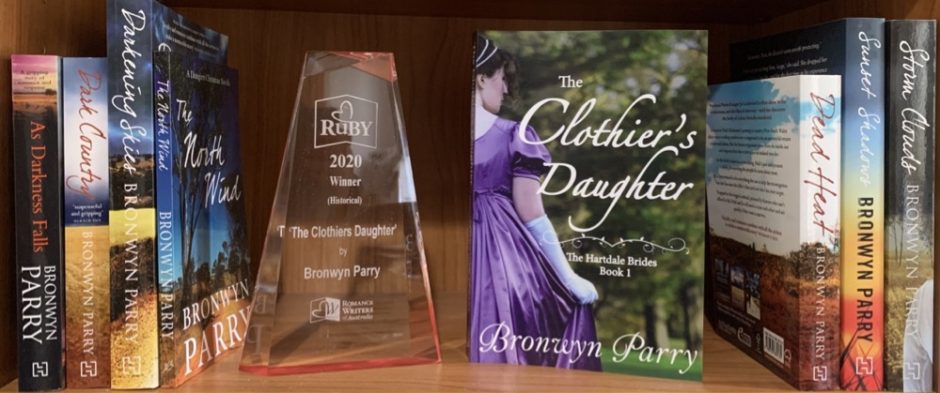
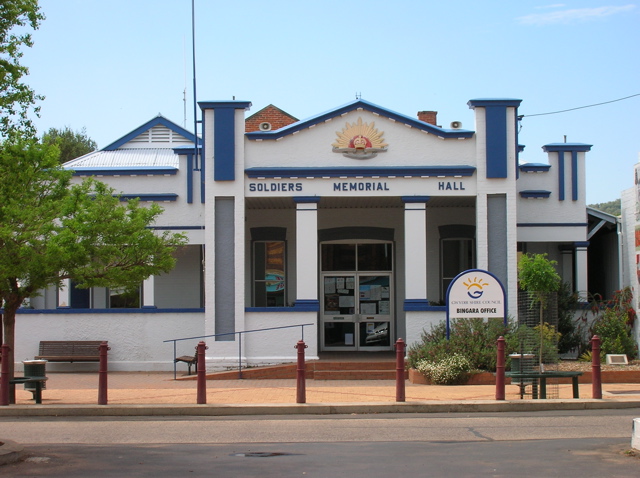
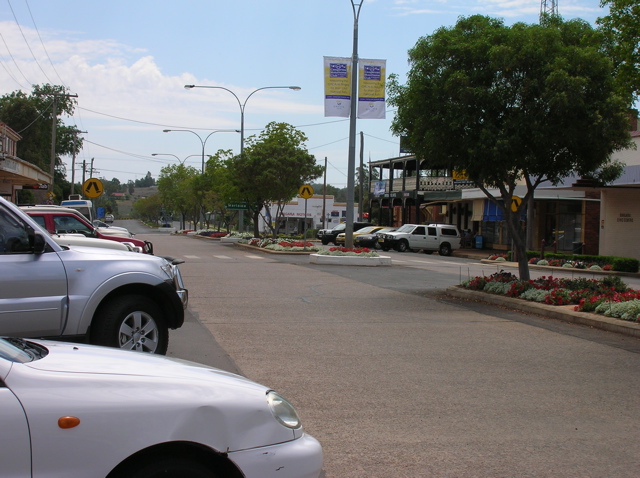
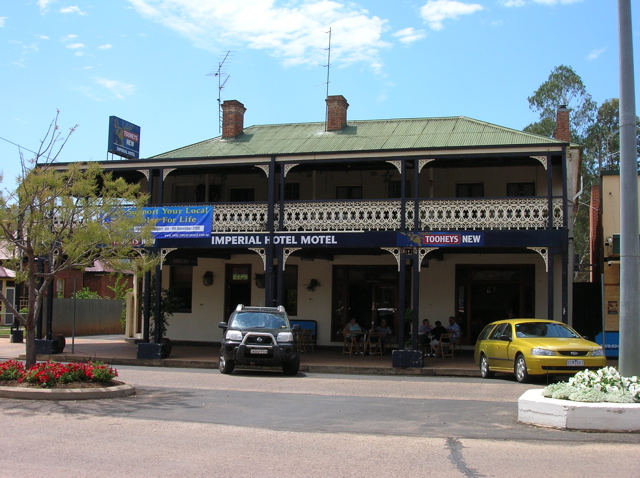
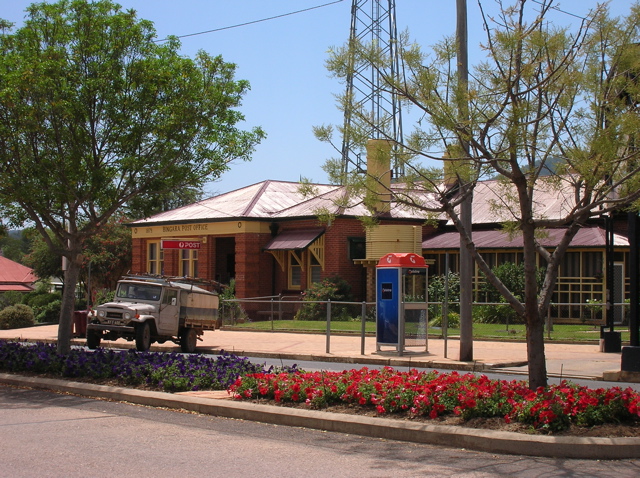
Thank you for this glimpse into rural Australia for those of us on the other side (well, sorta) of the globe.
I didn’t mention it in the entry post, but I came here via Wendy SuperLibrarian’s review. However, after reading the first chapter, I’m chomping at the bit to get this one on your writing’s merits alone.
And can I tell you that I’m very intrigued by the second book’s synopsis you’ve posted?
😀
Bronwyn, —- I love your blogs. It’s as if I’m being invited to trip though your world, chaperoned by a local.
Country towns contain spokes and a hub. The hub nurtures a soul. The substance and depth of that soul must surely be measured by the same distance from needed to travel to find an internationalizing outlet (McDonalds, etc). You bring your writing to life on the back of rich experience, a wonderful treat, for a reader, it wets the appetite for the main serving. (Thank you) —- Eric
azteclady, I do hope you enjoy the rest of the book, when you finally get it! I’m still working on book 2, and its proving a challenge, but in a good way – I think!
Eric, I think there’s an immediacy about experiencing country towns that is not present in the city; you can’t be anonymous. Even as a visitor in a strange place, I’m more aware of myself than when I’m in a crowd in the city, and far more aware of others. I wonder about their stories, where they belong in the community, and in the land. Relationships between land, people, town have histories, and I get a much stronger sense of that in a country town than in a city. Definitely inspiring!